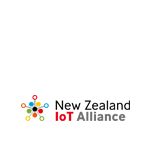IoT Alliance comment:
“Levno, who provide resource monitoring services to the rural sector, has signed up as one of Spark first IoT customers. Levno is rolling our IoT technology as part of its fuel monitoring service to customers, leveraging the recent completion of Sparks nationwide IoT network. Levno customers will see an immediate benefit through this new partnership through real-time monitoring of their fuel storage systems, lower infrastructure costs by moving services off the mobile network, and better refueling response times.”
Full article source: Sparknz.co.nz
Spark’s long-range ‘Internet of Things’ (IoT) network will launch later this month and Levno has signed as its first customer, in a partnership set to benefit the rural sector.
As part of the agreement with Spark, the network (originally scoped to cover New Zealand’s top 20 urban centres) is being extended to Levno’s customers in Manawatu, Canterbury and Waikato. Levno also anticipates reduced operating costs on the new infrastructure, allowing greater focus on developing customer experience.
Levno plan to use the network from April, initially for their fuel tank monitoring service. The system consists of a battery-powered sensor attached to the fuel tank, which immediately reports any change in volume. This information gets sent in real-time, via the cloud, to the customer’s device. When levels get low, the fuel distributor is notified that a delivery is needed.
Spark’s GM IoT Solutions, Michael Stribling says that last year, when Spark announced plans to build two IoT networks in New Zealand, the huge potential of these for businesses soon became evident.
“Organisations across the country reached out to us, keen to be at the forefront of IoT.
“We know that for many, this is the technology they need to take their business to the next level—whether it’s by keeping better track of their resources, moving off cellular technology to lower their infrastructure costs, or testing the new IoT product they’ve been developing.”
Levno CEO Ray Connor says that when the company created the monitoring system in 2012, a suitable low power network wasn’t available in New Zealand.
Without a low power network, Levno began using available cellular networks. These were designed for higher power, higher data uses— something Connor says wasn’t an ideal option back then for a start-up.
“LoRaWAN lowers the cost of infrastructure for us. This is great for our business, but also for our customers because it means we can focus more resource on the stuff that directly impacts them— like building great user experience through our dashboard,” says Connor.
“I think this will be a trend as IoT becomes more pervasive. Development companies need to focus more on the experience for the people using their products to deliver real value to users and less on the infrastructure sitting under it.”
With sensors connected to a low-powered network, Connor also expects batteries to last twice as long—up to ten years instead of the five years they currently run for. The new network is also able to reach a wider area, enabling the company to extend its service into areas it is not currently able to reach using cellular technology.
IoT helps farmers manage resources
As the underlying infrastructure needed to enable IoT in New Zealand is established, consumers are seeing a greater range of connected technologies become available to them.
Farmer James Griffin is excited to be one of the first customers to use Levno’s fuel tank monitoring service over Spark’s LoRaWAN™ network from April.
Griffin manages the 200-hectare Griffin Family farm in Rangitikei. He has two diesel tanks and two petrol tanks which service three tractors, a truck and ten motorbikes. With some fuel tanks as far as 3.5KM from the farm house, Griffin has experienced the difficulty of keeping tabs on the valuable resource. As soon as Levno brought out its monitoring service, he got on board.
The system provides him with three main benefits: stopping fuel theft, managing fuel allocation and stock reconciliation.
“The potential in the original system for milk monitoring and fuel, I could just see it working on our farm,” Griffin recalls.
“The way we have it set up is that when there are any deliveries or removals from the tank, I have emails sent to me—particularly with removals. I have a text set up as well.”
Griffin says the system allowed him to stop fuel theft—something common on large farms. It gave him visibility of when fuel was disappearing unaccounted for. It also meant that when fuel was removed during the night, he could know straight away and investigate.
It also saves him time: “I don’t have to proactively tell anyone that I need more fuel. “We were constantly running out of fuel a few years ago. Now we can adapt to and monitor seasonal use better, and when we do need more, the system sends a message to Allied Petroleum and they come by with a delivery.”
With fuel being monitored so closely, farmers like Griffin have a view on which vehicles are needing fuel more often and which are running the most economically. The ability to reconcile stocks also helps with fuel excise duty claims.
For many farmers, this has meant huge savings—something Levno are looking to deliver to more rural customers as they step up their operations over the new Spark IoT network.
If you’re interested in finding out more about a Spark IoT service, please visit www.sparkdigital.co.nz/solutions/iot/






